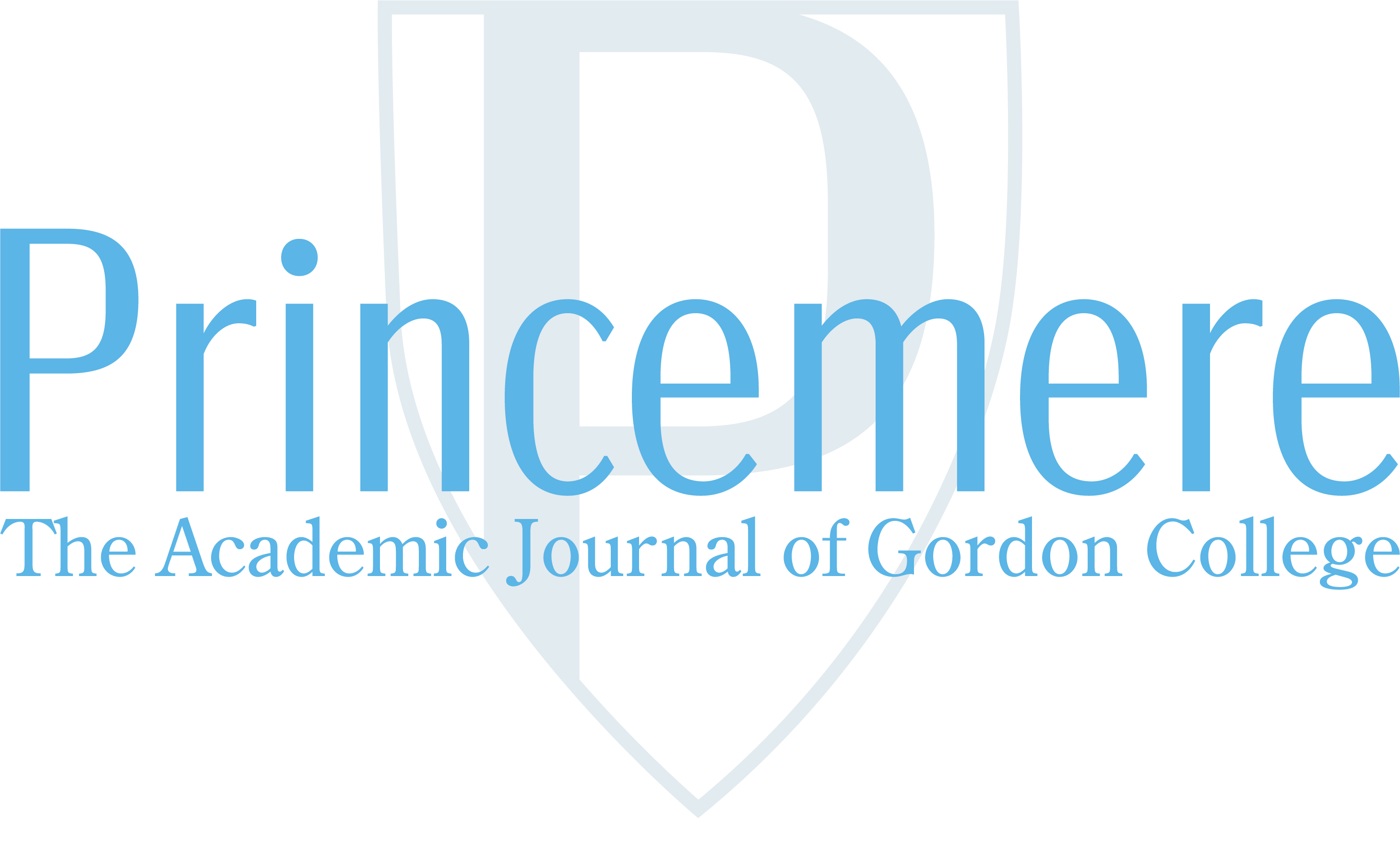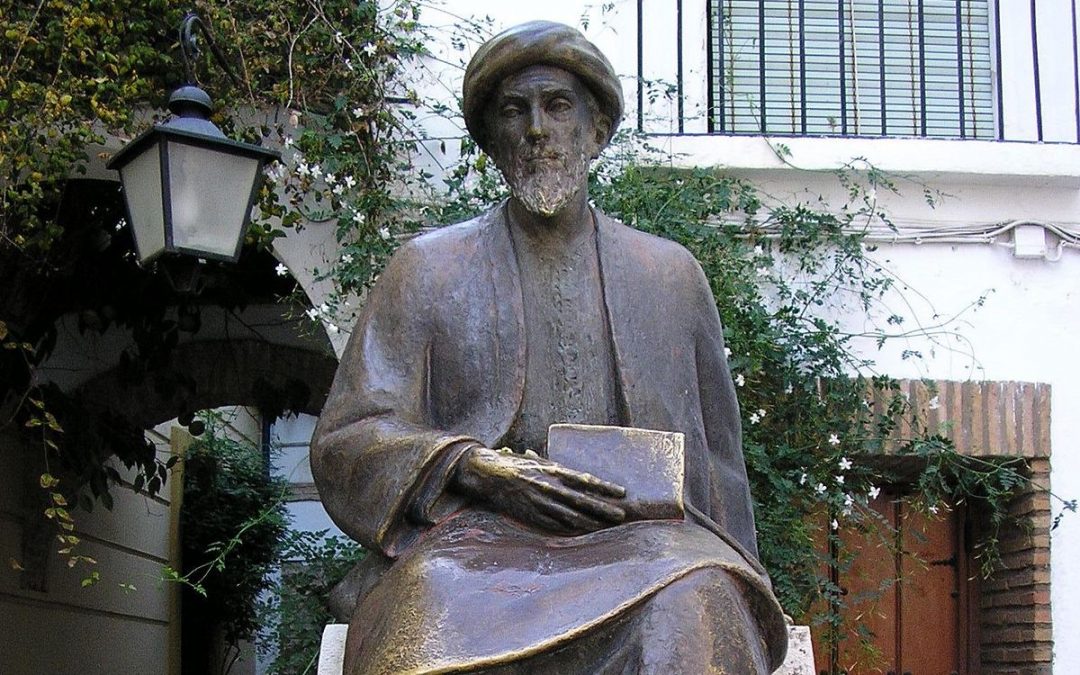II. Arabic Aristotelian Influence on The Guide
Maimonides’ exposure to the popular Arabic Aristotelian philosophers of his time—al-Fârâbî (872–950), Avicenna (980–1037), Al-Ghazali (1058–1111), Avempace (1085–1138), and Averroes (1126–1198)—played a highly influential role in the issues he chose to tackle in the Guide. Among these five, links in influence are seen in three groupings: al-Fârâbî and Avempace, Avicenna and Al-Ghazali, and finally Averroes on his own (with whom we shall deal separately, as his influence is more unique).
“Maimonides’ Alfârâbîan Aristotelianism may be explained by his having been bred and born in Andalusia, where the teachings of Avempace had left an impression. Like his fellow Cordovan Averroes, he was raised on the philosophy of Alfârâbî and Avempace” (Harvey 109). Al-Fârâbî and Avempace are quoted most by Maimonides in the Guide: the former six times in as many chapters; the latter six times in four (Harvey 109). Al-Fârâbî, who saw himself as the link between Aristotelian thought and the Arabic world (Fraenkel 110), sought specifically to determine the relationship between philosophy and Islamic law. Maimonides was no small fan of his: “I tell you: as for works on logic, one should only study the writings of Abū Naṣr al-Fārābī. All his writings are faultlessly excellent. One ought to study and understand them. For he is a great man” (Pines lx). Maimonides also commends Avempace as a “great philosopher [whose] writings are of a high standard” (Pines lx), but the most influential to Maimonides was, by far, al-Fârâbî, as Maimonides’ reasoning behind composing the Guide more closely parallels al-Fârâbî’s work. The Guide “shows Jewish philosophers who take the literal sense of the divine Law to be ‘inadequate and false’ how to coordinate the knowledge acquired from non-Jewish sources with the divine Law by ‘elevating’ them from its literal to its allegorical content” (Fraenkel 122). Both al-Fârâbî and Maimonides desired to clear the fog hindering the view of those who studied divine law and philosophy and were struggling to see how the two were compatible. As for the second grouping, it is evident that Maimonides regarded their writings so highly that he may have conflated them with those of Aristotle himself! Davidson argues that Maimonides’ citation of Aristotle’s “Book of Metaphysics” (I. lxix., 103) when teaching on corporeal form is erroneous due to the fact that Avicenna was the one who most intensely advocated for its addition as a stage in Aristotle’s physical scheme describing how forms and matter combine to become elements (102). Davidson, therefore, suggests that Maimonides likely saw Avicenna’s Metaphysics as “an acceptable substitute for the Metaphysics of Aristotle” (104). He adds that “virtually everything of a metaphysical character attributed by Maimonides to Aristotle but actually deriving from Avicenna can be found in Ghazali’s summary of Avicenna’s philosophy, the Maqāṣīd al-Falāsifa” (104n146).
The unique influencer of Maimonides was Averroes, his only contemporary on the list. Averroes wanted to spread among as many as possible the most basic understanding of divine law. He appealed, as it were, to the lowest common denominator of Scriptural understanding, which was the exoteric, literal teaching, which would preclude a methodology such as Maimonides’, who used the literal as a springboard to the allegorical in order to display the true meaning of the text. Stroumsa argues that the Guide may be understood as “a reaction and answer to Averroes” (73). This can mainly be seen in that “Averroes frequently uses the expression ‘the intention of the Lawgiver’” (Stroumsa 74). In response, it seems, Maimonides said that the further interpretation of those verses in Scripture that seem to argue for anthropomorphism and God’s corporeality is “the literal meaning of the biblical text” (II. xxv., 199). There may thus be some irony underpinning this assertion, which would portray Averroes as one willing to recognize deeper meaning while fearing widespread misinterpretation by the less-learned. By contrast, Maimonides portrayed himself as one willing to communicate truth regardless of the consequences: “When I find the road narrow, and can see no other way of teaching a well-established truth except by pleasing one intelligent man and displeasing ten thousand fools – I prefer to address myself to the one man, and to take no notice whatsoever of the condemnation of the multitude” (Guide, introduction., 9). It is important to remember that though Maimonides discussed interpretations of anthropomorphic verses, the Guide was still only intended for those who were seeking out these interpretations due to dissatisfaction with apparent contradictions between Jewish law and philosophy—thus, the Guide’s esoteric nature remains.
Conclusion
In his Iggeret ha-Shemad, Maimonides’ response to the persecution and suppression of Jews under the heavy hand of the Almohads garnered much backlash regarding his stance on the acceptability of a Jew “converting” to Islam in order to save his own life. His stance—that of encouraging a feigned/disingenuous conversion and instructing Jews to migrate to a safer country as soon as the opportunity arose—has made many wonder if this was his true conviction or if he was simply trying to be consistent in instructing others to do what he had done himself. Mishneh Torah was Judaism’s first true systematic theology text, born out of Maimonides’ anguish over the sad state of Jewish learning that had been crippled and discouraged during Almohad control. Seeking to present a straightforward text that would help get the laity back on track in terms of Torah study, he did away with the meticulous discursive commentary found in the Talmud, in order that his readers might not be bogged down by extraneous material, instead being freed up to pinpoint, and thus memorize more easily, the proper interpretation of the law. Not only was this text an answer to the negative state of Torah study but equally a hopeful springboard into the Messianic age during which all Jews would be liberated to study Torah and the whole world would be filled the knowledge of God, which came through Torah. Maimonides wrote Moreh Nevuchim out of necessity, as he determined to equip his top student, ibn ‘Aqnin, with his authoritative teachings on God as they parted company for the last time, hoping to guard him from error. Dealing with the main issue of anthropomorphism in Scripture and the proper way to interpret it, Maimonides explained that God could not be described in human terms and that a literal interpretation of anthropomorphic verses describing God had to be understood figuratively. Not only was the Guide an argument for a specific kind of biblical exegesis, it dealt extensively with metaphysics in trying to explain what Maimonides saw as the incorporeality of God. With a rich tradition of Arabic Aristotelian philosophers from which to draw, Maimonides interacted with the ideas and writings of such as al-Fârâbî, Avicenna, Al-Ghazali, Avempace, and Averroes.
Even the greatest writers are not entirely original; they are, to some degree, even if it is miniscule, a product of their environment, and the works of Maimonides are no exception. In this one controversial letter and these two hefty masterpieces in the genres of jurisprudence and philosophy, Maimonides had a burden forced on him by external circumstances and decided to respond with trailblazing literary excellence for which Jews and non-Jews, scholars and laity, are forever indebted to him.

Marco Antunes
I graduated from Gordon in December 2020 with a B.A. in Biblical Studies, having spent a semester abroad at Jerusalem University College as well as having taken intensive summer Greek at Gordon-Conwell. I served as an Old Testament teaching assistant for Dr. Ted Hildebrandt and a Hebrew/Pentateuch teaching assistant for Dr. Joanna Kline. I now work as an Assistant Editor for the Hendrickson Publishing Group, a division of Tyndale House Ministries.
I began having an interest in Old Testament studies upon attending my local Messianic Jewish congregation. But that beautiful commentary section of the Jenks Reference Room was my genuine home for the better part of three years. The Senior Seminar for which this paper was written was taught by the beloved Dr. Elaine Phillips, whom I thank for suggesting Maimonides as a topic, as the wealth of information available on this scholastic juggernaut of Jewish history made my research all the more engaging. It allowed me to get a taste of how to write something concise, specific, and unique about a topic on which reams upon reams of paper have been printed.

